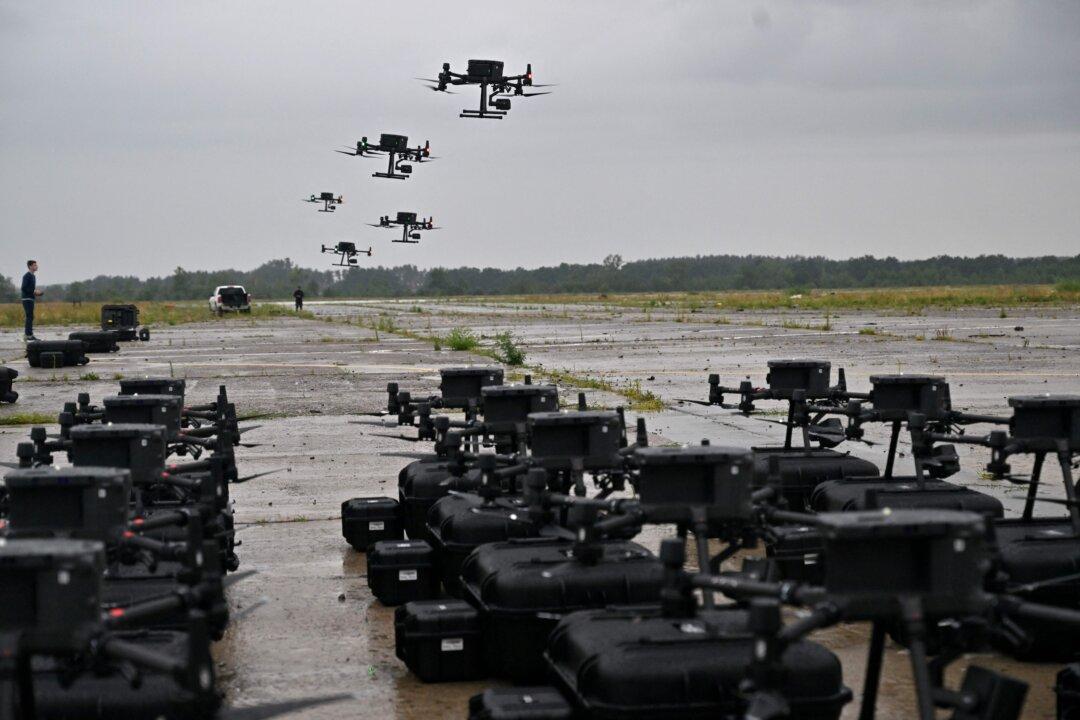These countries need to shoulder the majority of the responsibility to counter Chinese aggression against their ships, planes, and territorial rights.
Commentary
The increasingly aggressive actions of the Chinese regime in the South China Sea and China’s other near seas strongly attest to the need for those on the receiving end of Chinese aggressions to boost the percentage of gross domestic product (GDP) that they spend on national defense to levels comparable to those of the United States, about 3.4 percent.
The U.S. Navy and the Armed Forces of the Philippines recently
conducted a bilateral maritime cooperative activity in the South China Sea. On the U.S. side, the military exercises involved Carrier Strike Group One, led by the Nimitz-class supercarrier USS Carl Vinson, with a Ticonderoga-class cruiser and an Arleigh Burke-class destroyer in support. The Philippine ships included two small surface combatants. According to all published accounts, the drills went smoothly.
Chinese aggression against the Philippines began in 1999, when the Philippines intentionally grounded a ship to protect its legal claim to the Second Thomas Shoal from the
communist Chinese regime’s illegal claim. Since 2023, Beijing has ramped up the use of its navy, coast guard, and maritime militia ships to target the Philippines’s small navy and coast guard, as well as its commercial and fishing vessels, with increasingly aggressive and dangerous tactics designed to intimidate, damage, and even injure.
The recent U.S.–Philippines maritime exercises did nothing to stop Beijing’s harassment. Chinese coast guard ships and a navy helicopter
harassed a group of Philippine fisheries vessels conducting a scientific survey just days after the conclusion of the joint exercises, forcing them to cancel the operation.
Today, such harassment is not limited to the South China Sea—it is also aggressively practiced in China’s other near seas, including the Yellow Sea, the East China Sea, and areas in and around the first island chain, which includes Japan, Taiwan, the northern Philippines, and other smaller islands.
Countries regularly subjected to Beijing’s campaign of harassment and intimidation include Taiwan (which spends 7.7 percent of its GDP on defense), the Philippines (which spends 1 percent),
Australia (which spends 1.9 percent),
Japan (which spends 1.2 percent),
Vietnam (which spends 2 percent),
South Korea (which spends 2.8 percent), and even the
United States.
The Chinese regime has hundreds of ships and boats from its navy, coast guard, and
maritime militia participating in this dangerous harassment campaign and may be able to surge
thousands as needed.
Despite protests and warnings from the nations harassed—and despite international maritime courts finding the
Chinese regime’s actions illegal—the regime continues to harass and attack other nations’ ships and use military force to seize territory.
The harassments include—but are not limited to—continuously cutting in front of ships and forcing them to stop or maneuver to avoid collisions, threatening to ram ships,
ramming ships, using lasers to blind ship and
aircraft crew members, using water cannons on the crews of other nations, and boarding ships to attack or
beat the ship’s crew. Moreover, the regime also
uses helicopters to harass and intimidate targets.
We can draw a couple of conclusions from this. The first and most obvious is that the Chinese regime believes that such tactics are benefiting it. Indeed, these tactics and ships played a key role in greatly strengthening its tactical and strategic position by establishing its network of
27 mostly illegal island bases in the South China Sea.
Additionally, it could be argued that some of the favorable agreements Beijing has been able to sign with other South China Sea countries over the use of maritime resources only happened because the other countries
hoped that such agreements would induce the Chinese regime to back off from its confrontational campaign of intimidation.
It is also increasingly clear that being allied with the United States—as Australia, Japan, South Korea, and the Philippines are—may not be enough to stave off Chinese harassment.
Clearly, Beijing believes that having many ships, submarines, planes, and missiles benefiting from its greatly improved
satellite tracking and surveillance technology has positioned it as the most powerful player in the Indo-Pacific. While the Chinese regime certainly does not want a war with the United States, it is not going to stop its harassment campaign simply because the United States demands that it do so.
However, while the Chinese Communist Party (CCP) obviously feels its campaign continues to yield results, it has an obvious downside in that it prompts nations subject to its predations to form strategic alliances to counter the regime. One of the most important is the Quad alliance, a Japanese-led initiative that brought together Australia, India, the United States, and Japan to support a “rules-based maritime order in the East and South China seas” to counter the CCP’s illegal maritime claims.
Another key strategic alliance is the American–Japanese–Korean trilateral pact. In a recent statement, the alliance’s members said: “We recognize the importance of opposing unlawful maritime claims in the South China Sea. We express support for the global maritime order, including the freedoms of navigation and overflight, based on international law, as reflected in the UN Convention on the Law of the Sea.”
While it is appropriate that both alliances include the United States as a significant contributor, it is also important that the members whose ships, aircraft, and territories are threatened by the Chinese regime bump up the percentage of their GDP that they spend on defense so that they can field the ships and aircraft necessary to better deter Beijing.
Even with increased spending by other countries, the United States would almost certainly remain the largest single contributor. Still, the other nations would contribute far more than they have.
The United States is $36 trillion in debt. Eighty years after the conclusion of World War II, it can no longer afford to provide the lion’s share of military power for every security issue facing the free world.
Views expressed in this article are opinions of the author and do not necessarily reflect the views of The Epoch Times.







